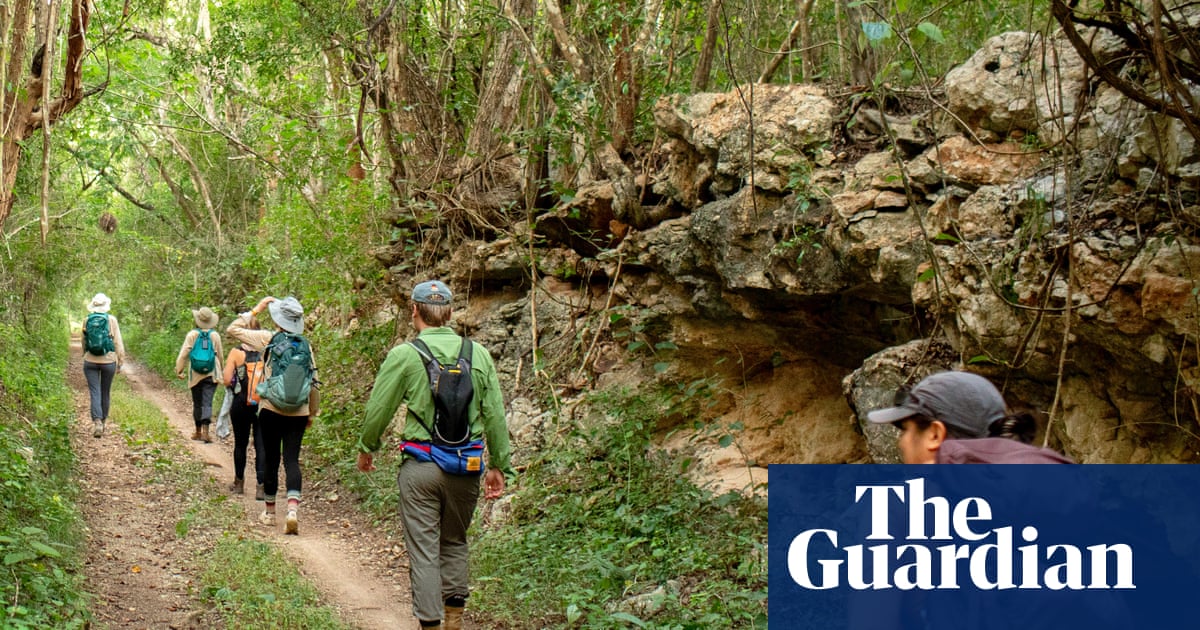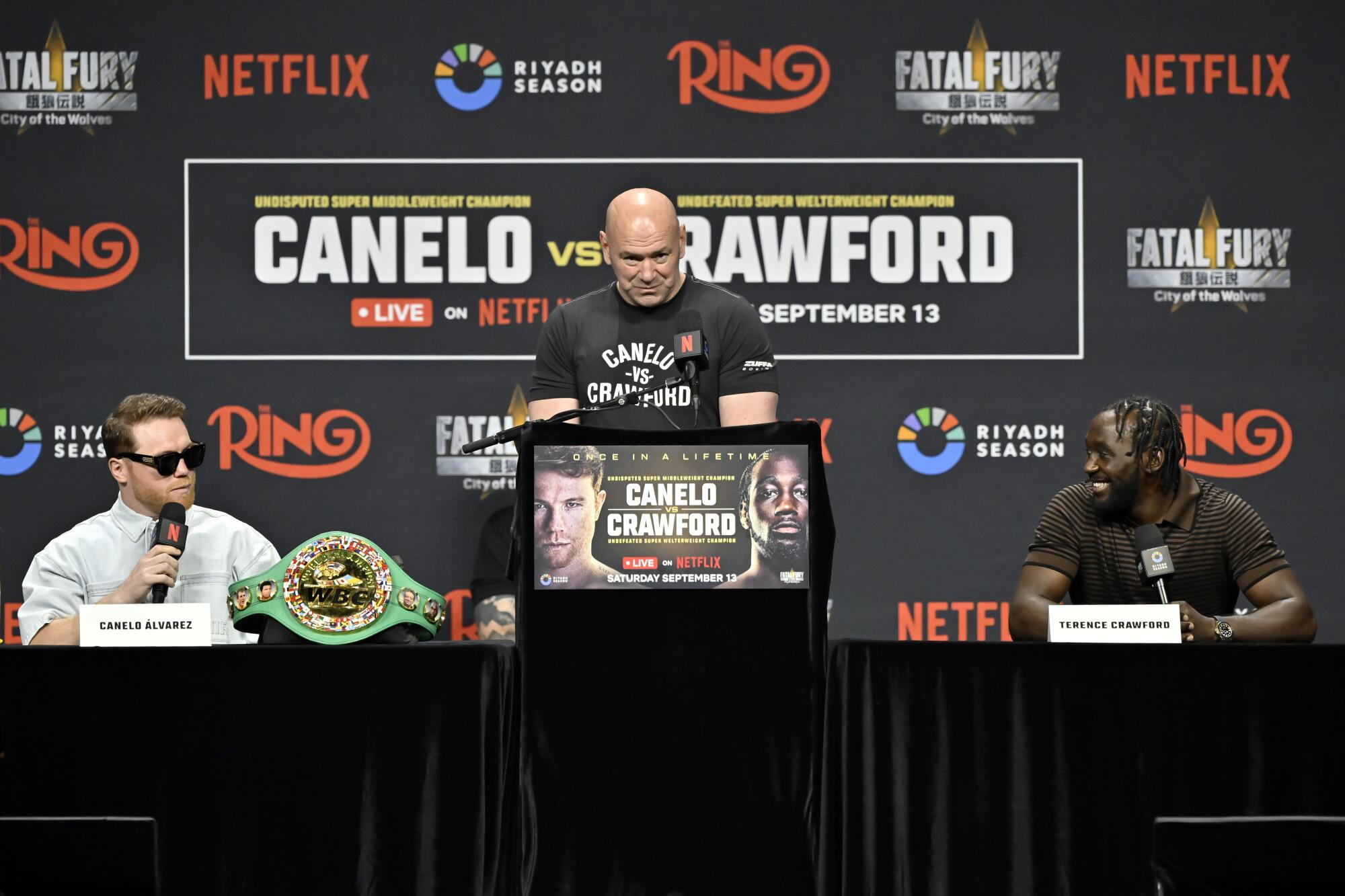Walking the Mayan camino: a five-day hike in Mexico’s Yucatán | Mexico holidays
When you’re trekking in 40C heat, there’s nothing more welcome than a swimming hole. This particular oasis was a perfect circle of inky, deliciously cold-looking water. Only problem was, it was 10 metres below the trail. I took a deep breath and channelled my inner Tom Daley. One, two, three – go! I leapt into the void and plummeted like a stone – points deducted for the huge splash as I hit the water.
When I came up for air, I had the cenote, or sinkhole, to myself, barring the birds nesting in the craggy rocks that formed it. I floated on my back and watched as a black vulture tried to coax her fluffy chick to take its first flight. Who knew carrion-eaters were so cute?
The Yaal Utzil cenote is one of many along the Camino del Mayab, a 68-mile (110km) walking and cycling trail near Mérida on Mexico’s Yucatán peninsula. The trail opened in 2020, but follows historic paths; walkers and cyclists can tackle it independently or go on a guided tour. I was walking it over five days with a couple from Hong Kong and our guide, Misa Poot.
Before the journey, I met the co-founder of the camino, Alberto Gutiérrez Cervera. He took up walking with friends while at university in Mérida. Inspired by the success of the Camino de Santiago in Europe, he decided to turn his student hikes into a Mexican pilgrimage route, offering a more sustainable form of tourism than, say, the nearby resorts of Cancún on the peninsula’s Caribbean coast.
Alberto showed me around Mérida, the “white city”, and introduced me to Maya history and culture. Many tourists visiting ancient sites such as Chichén Itzá assume the Maya are a long-dead civilisation, but they are very much alive in Yucatán today. However, Alberto explained, modern Maya often face poverty and prejudice.
Mérida was founded by Spanish conquistadors in 1542, but it was built on the site – and using the stones – of an ancient Maya city, Ti’ho. Alberto took me to the Palacio de Gobierno on Plaza Grande, where powerful murals by Fernando Castro Pacheco tell the brutal story of the conquest. Of all Indigenous groups, the Maya held out the longest against the invaders and led uprisings against them – during the Caste war of the 19th century, they almost recaptured Mérida.
Early the next morning, it was time to start walking. As we were in the driest season (April/May), we would set off at 6am to beat the heat, and walk only about nine miles a day. Humberto Choque, our driver, would transfer the luggage while Misa led the walks.
We set off from Xmatkuil, just outside Mérida. It was easy going; Yucatán is largely flat and the paths are well maintained. Misa, an ornithologist, pointed out birds as we walked: bright orange orioles, yellow-bellied flycatchers, turquoise motmots, even a couple of parrots.
We were scheduled to stop at Hacienda Yaxnic; the region is known for its haciendas as well as its cenotes. I had pictured a colonial country house and fantasised about a cool drink on a shady terrace. What I discovered was a hulking ruin – picturesque, but abandoned. I would soon find out why.
We continued our walk to San Antonio Tzacalá, where we met a young historian at the community library built by proceeds from the camino. His lecture shed light on our journey. The haciendas, originally owned by the Spanish, grew rich on what was effectively Maya slave labour. The whole region was once devoted to growing a monocrop, henequen (a kind of agave) that was so valuable for making rope it was known as “green gold”. The paths we were walking were miniature railroads, where “trucs” (carts) trundled the leaves from the plantations to the hacienda to be processed.
After this sobering talk, we were invited to a local home for lunch. Our hosts taught us how to make recado rojo, a spice paste in numerous Yucatán dishes, most famously cochinita pibil (slow-roasted pork). For us, it was used to marinate chicken or flavour potato cakes (my vegan option), served with rice, refried beans and salad.
The camino has brought employment to villagers such as this host family; 80% of the income generated by the tours stays in the 14 communities it passes through. Without it, many would be forced to leave to find low-paid work in Mérida. Now, more people can continue their traditional ways of life on the milpa: smallholdings used to grow corn, beans and squash, and raise a few chickens, turkeys or goats. Later on the walk, we visited a woman who also keeps melipona bees, a small stingless variety revered throughout Maya history, but now endangered.
After lunch, we drove to a new ecological centre, built partly in recompense for the environmental damage caused by the controversial Tren Maya railway, which opened in 2023. Here, we learned that Yucatán’s cenotes were formed by the Chicxulub asteroid that hit 66m years ago. Before that, the peninsula was underwater; on later parts of the route, we saw fossilised sea creatures underfoot.
We heard about efforts to protect the landscape, including the establishment of the surrounding Cuxtal Ecological Reserve. This forested region is home to 168 species of birds. Another aim of the camino is to educate local people, as well as visitors, about the value of the land – not as a commodity to sell to developers, but as a precious habitat, carbon store and water source (the reserve provides 50% of Mérida’s water).
In the late afternoon, we arrived at our first cenote, Sambulá, an underground cave with clear, shallow water. Cave swallows swooped overhead, snatching insects as we swam. By the time we emerged, Misa and Humberto had erected five tents. We had dinner with a family who taught us each a phrase in the Yucatec Mayan language: mine was “Ma’alob ak’ab”, or “Good night”. I was certainly ready for bed, and slept soundly despite the hard ground, waking to birdsong.
Over the four days that followed, we settled into our routine of walking, visiting, swimming – and eating. The food was hearty home cooking such as poc chuc (citrus-marinated grilled pork), salbutes (deep-fried tortillas with various toppings) and panuchos (similar but stuffed with black beans). I was offered vegan versions, or alternatives such as tortitas de chaya (maize fritters mixed with a spinach-like green). One family had opened a small restaurant after honing their skills hosting walkers.
We swam in cenotes every day. One was warmed by the sun and half-covered in water lilies; others were below ground, with spooky stalactites and stalagmites. Unlike cenotes elsewhere in Yucatán, which I had shared with coachloads of visitors, these were blissfully empty.
One of the haciendas we stopped at had been turned into a hotel. I got my wish, sipping a margarita by the pool, but felt uncomfortable in light of its history. Another was now a museum. Our guide, in his 70s, had worked there all his life. He showed us the jail cells – holes in the ground – where workers were once imprisoned for minor misdemeanours.
We spent our second night in cabanas and the last two in a hotel. Misa and Humberto, both in their 20s, were lively company, introducing us to Mexico’s melodramatic telenovelas – Abyss of Passion! Fire in the Blood! – playing us songs by its most-loved crooners and teaching us Latin dance steps.
On our last day, we ventured down to a candlelit underground cenote, where we took part in a moving closing ceremony led by a Maya shaman (the intended final stop on the walk, the archaeological site of Mayapán, is currently closed). We were encouraged to reflect not just on our journey, but our lives. There wasn’t a dry eye among us.
I had been prepared for a long, hot walk punctuated with cooling dips, but the Camino del Mayab is far more than that. It is a chance to learn about the Maya way of life – and help sustain it for generations to come.
The trip was provided by Camino del Mayab ; the five-day all-inclusive tour is 14,900 Mexican dollars (about £580); next available tours 12-16 Nov and 12-16 Dec. A two-day tour on 11-12 Oct is £220; one-day excursions also available


